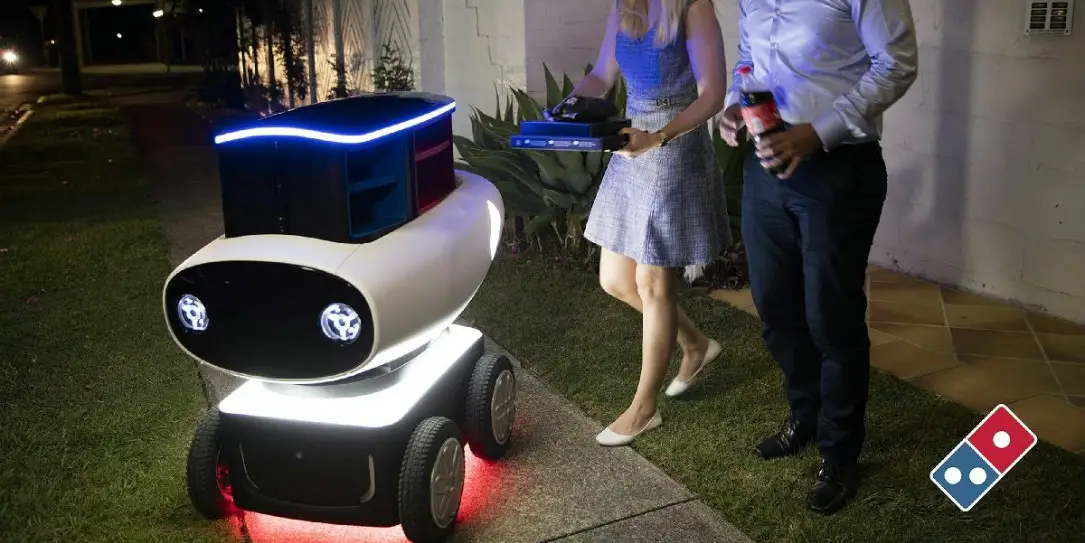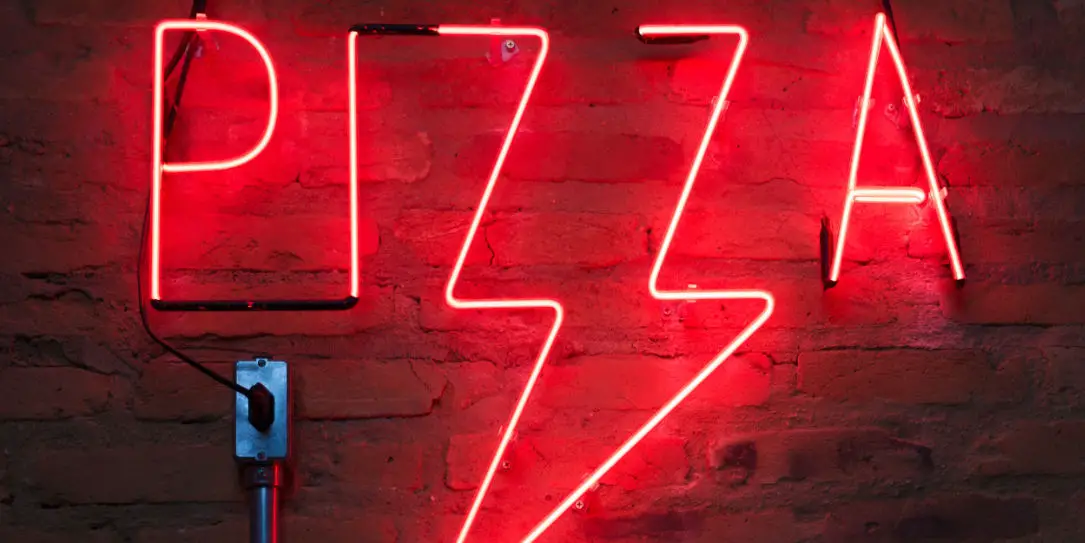Autonomous pizza delivery (and food delivery in general) has been the center of the driverless vehicle discussion for years. Every year, it seems as though the conversation remains the same, with tech companies ensuring that the vehicles will become standard soon. Yet why hasn’t that happened?
The setbacks within the autonomous vehicle industries can range from regulations to logistics. However, autonomous delivery is still on its way into mainstream attention and use. To better understand the necessities and impediments that the industry faces, it’s essential to know the recent steps developers have taken.
The Rise of Autonomous Food and Pizza Delivery
Autonomous vehicles aren’t a new idea — they’ve been around in media as futuristic concepts that seem a long way off. However, they’re here now, and companies have them ready to go or already in play.
One of the main focuses of the conversation is the robotics company Nuro, which specializes in autonomous delivery vehicles. In mid-2019, they announced a partnership with Domino’s Pizza. Together, the two companies planned to implement driverless delivery in the fall of 2019.
Nuro and Domino’s designed these vehicles to drive at low speeds on highways, through cities and more. A customer can track their delivery on the Domino’s app, and once the car reaches a customer’s house, they enter a code the app provides to unlock the vehicle and retrieve the order. Since these vehicles don’t require anyone to operate them, they only feature space inside for the hot and cold contents. The cars don’t need seats, steering wheels or room for people.
Uber is also getting involved in the autonomous industry. The company already expanded into the food delivery service with Uber Eats, so adding autonomous vehicles is within its reach. Alongside cars, it’s looking into drone delivery in urban areas. This technology would put the brand in competition with Amazon and Google drone services that deliver packages right to a customer’s home.
On a smaller scale, driverless delivery is impacting campuses. In Stockton, California, students at the University of the Pacific were able to place food orders for delivery in 2019. The compact vehicles, developed by PepsiCo, would then bring their food. However, with the university’s system, as well as Uber and Domino’s, logistics and regulations became impediments.

What Happened to Autonomous Delivery?
With all the momentum and excitement around autonomous delivery, why do experts promise integration every year? What happened that keeps driverless delivery seemingly sedentary?
In short, nothing happened to the industry, at least not in terms of relevance. It’s not going anywhere anytime soon. However, the problems that autonomous delivery faces are slowing it down. Just as companies think they have a hold on kicking off their driverless vehicles, other issues pop up. From regulations to safety to practicality, the industry faces a number of setbacks, which is why the promises seem repetitive.
For instance, Nuro’s plans for Domino’s delivery has several obstacles to overcome. Though deliveries across cities, highways, and traffic are ambitious, it comes with safety risks and logistical issues. How will the vehicle get around objects or stopped cars? How can it work with traffic? How can Nuro ensure safety for people or animals on the road?
This kind of change to driving will require new regulations. States have to set these laws and then approve them individually. Though more municipalities are signing off on this legislation, they will still have to get approval from the federal government.
The University of the Pacific, too, faced issues with its autonomous delivery system. As the bot has the potential to disrupt classes, developers created a new system where students can choose from a variety of spots on campus to pick up orders. The robot will wait 10 minutes at the selected area, after which it’ll move onto the next order.
The precautions and rules the industry must follow slow down the integration process. In the end, however, civilians and consumers benefit. As governments and manufacturers regulate the vehicles as much as possible, customers can get their deliveries promptly while those on the streets remain safe.
Transforming Food and Catering Sectors
Delivery will, of course, change as more driverless vehicles come into play. However, the implications of this technology could change the game for the food and catering industries, too. As autonomous delivery starts to become a primary method of food transportation, businesses will invest in related trends. If the vehicles prove safe and reliable enough, event transportation could take on a whole new look.
Part of food delivery involves keeping the vehicle organized and optimal for transportation. With autonomous distribution, meals could arrive at a wedding, birthday celebration or more untouched and preserved due to the vehicle’s slow speeds and temperature-controlled sections.
With apps like Uber Eats and DoorDash leading the way, delivery is becoming a more accessible service. Automation could alter the way restaurants prepare, market or sell their food. A change of this scale could also affect the supply chain. Could tractor-trailers eventually become autonomous too? The industry of autonomous cars, as a whole, has the potential to change transportation altogether.

The Future of Autonomous Vehicles
Though projects have been slow to take off, the ideas are groundbreaking.
Since autonomous delivery vehicles only reach 25 miles per hour, they will generally be safer than regular automobiles that can reach dangerous speeds. As a result, the federal government recently approved Nuro’s R2 model for use. Other companies are making improvements, too. Uber, Tesla, Audi and Zoox are some of the manufacturers making strides in innovative developments for self-driving cars.
According to some experts, autonomous cars have the potential to become safer than humans driving. First, however, they will need to pass regulations and safety requirements. It’s a slow burn, indeed, but as of today, driverless vehicles are already on the roads, many of which make deliveries. While they might have limits to their range or abilities, the technology is still making progress.
Realistically, these vehicles are several years away from becoming part of everyday life. They require trial and error tests above and beyond standard cars. With the rate of innovation, though, a breakthrough could come any day.
What do you think of autonomous pizza delivery? Let us know in the comments below or on Twitter, or Facebook. You can also comment on our MeWe page by joining the MeWe social network.
In some of our articles and especially in our reviews, you will find Amazon or other affiliate links. As Amazon Associates, we earn from qualifying purchases. Any other purchases you make through these links often result in a small amount being earned for the site and/or our writers. Techaeris often covers brand press releases. Doing this does not constitute an endorsement of any product or service by Techaeris. We provide the press release information for our audience to be informed and make their own decision on a purchase or not. Only our reviews are an endorsement or lack thereof. For more information, you can read our full disclaimer.
Last Updated on February 3, 2021.











Comments are closed.